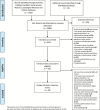How Can Autonomy Be Maintained and Informal Care Improved for People With Dementia Living in Residential Care Facilities: A Systematic Literature Review
- PMID: 30239712
- PMCID: PMC6858830
- DOI: 10.1093/geront/gny096
How Can Autonomy Be Maintained and Informal Care Improved for People With Dementia Living in Residential Care Facilities: A Systematic Literature Review
Abstract
Background and objectives: For people with dementia living in residential care facilities, maintaining autonomy and receiving informal care are important. The objective of this review is to understand how caregiving approaches and physical environment, including technologies contribute to the maintenance of autonomy and informal care provision for this population.
Research design and methods: A literature review of peer-reviewed articles published between January 1995 and July 2017 was performed. Realist logic of analysis was used, involving context, mechanism and outcome configurations.
Results: Forty-nine articles were included. The improvement of the relationship between residents and formal/informal caregivers is important. This increases the knowledge (sharing) about the resident and contributes to their autonomy. A social, flexible, and welcoming attitude of the formal caregiver improves the provision of informal care. Specially designed spaces, for instance, therapeutic gardens, create activities for residents that remind them of themselves and contribute to their autonomy. Use of technologies reduces caregiver's time for primary tasks and therefore enables secondary tasks such as interaction with the residents.
Discussion and implications: The results revealed how residential care facilities could maintain autonomy of their residents and improve informal care delivery using caregiving approaches and the physical environment including technologies. The results are supporting toward each other in maintaining autonomy and also helped in enhancing informal care provision. For residential care facilities that want to maintain the autonomy of their residents and improve informal care delivery, it is important to pay attention to all aspects of living in a residential care facility.
Keywords: Long-term care; Person-centered care; Physical environment; Realist evaluation; Technology.
© The Author(s) 2018. Published by Oxford University Press on behalf of The Gerontological Society of America.
Figures
References
-
- Baalen A. V., Vingerhoets A. J. J. M., Sixma H. J., & Lange J. D (2011). How to evaluate quality of care from the perspective of people with dementia: An overview of the literature. Dementia, 10, 112–137. doi:10.1177/1471301210369320 - DOI
Publication types
MeSH terms
LinkOut - more resources
Full Text Sources
Other Literature Sources
Medical



